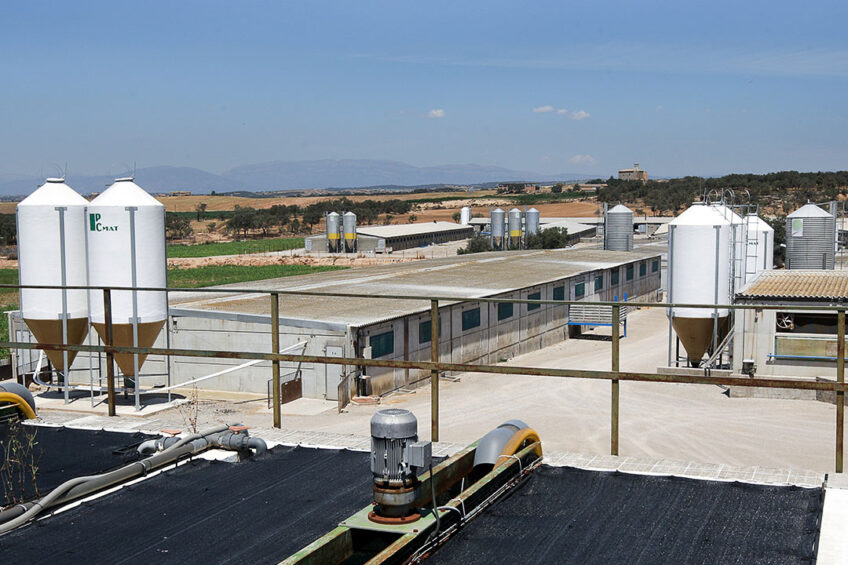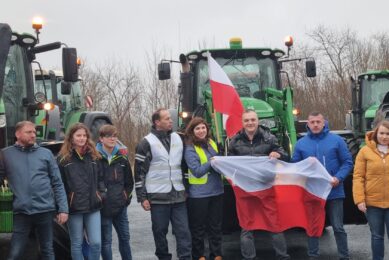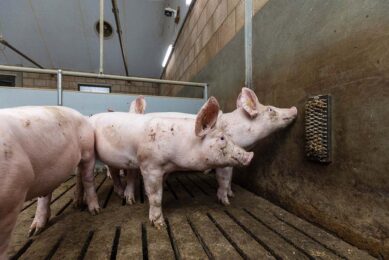Pigs flock to the Spanish sun

Pig farming in the Netherlands and Germany is declining due to a combination of environmental and animal welfare rules and an aging farming population. Spain is gladly taking over the production run-off in North Western Europe.
While pig production is shrinking in the Netherlands and Germany, it is booming in Spain. Rabobank’s latest quarterly update states that Spain produced 9% more pork in 2020 than in the previous year. That isn’t a new development. In recent years, Spain has rapidly been rebuilding all the pig places that have disappeared in North Western Europe, and even more than that. EU figures show that the Spanish pig sector has grown continuously in recent years (see Table).
Accelerated pig production growth in since 2019
The growth has accelerated rapidly since 2019. Both the production, and especially the export of pork. Spain exported more than 1.9 million tonnes of pork and by-products in 2020. In 2018, the export volume was 870,000 tonnes. Of the total EU exports of pork to third countries in 2020, 35% came from Spain.
A real boost for the Spanish pig sector was the construction of a mega slaughterhouse by the Italian meat company Pini. Under the name Litera meat, Pini opened a slaughterhouse in Binéfar in 2019 that has a capacity of processing 160,000 pigs every week. The complex is located on a 13ha site, has 22 cutting lines and employs 1,600 people. At 10 km from this complex, Pini opened a sow slaughterhouse.
Pig production growth a combination of factors
The reason for the strong growth of Spanish pig farming is a combination of factors, says Guus Hoefnagels of trading company Interporc. He knows Spain both as a sales country for pigs and piglets and as a pig farmer. His impression is that the big Spanish pig integrations have done well financially in the past 5 years. Mainly because of export to China. In addition, they have a competitive cost price and can market strong brands. Spain also has a large domestic market with about 50 million inhabitants.
The Spanish integration structure is a model that operates very effectively and robustly on the global meat market in 2021. If customers want meat from pigs raised without antibiotics for example, it will be available 4 months later, says Benny ten Thije of trading company SelectPorc. This applies to any product specification. In the integration structure, a small team decides on changes and that is how it is done.
In the Dutch structure, it is not possible to arrange something quickly, because every farmer has an opinion. The Spaniards also have a young and extremely driven sales team. Where the pig price fell by € 0.03/kg in mid-June in Germany and the Netherlands, it rose € 0.003 to € 1.553/kg live weight in Spain. That small price increase, but also the price level, says something about their sales, Ten Thije says.
Unlimited possibilities for swine in Spain
In recent years, many pig farms have been built in Spain. Particularly in the Aragón region, where there is still environmental room to grow. Stimulated by meat company Pini, 9.34 million pigs were slaughtered in Aragón in the first 11 months of 2020, 25.7% more than in the same period in 2019. The Catalonia region leads the way with 21.41 million pigs slaughtered in the first 11 months of 2020. In Catalonia, however, the winning streak is over. That is where the pig sector is reaching its environmental limits.
Spain seems like the promised land for anyone who has a lot of pigs and wants many more. It is true that local Spanish administrators in regions with a lot of unemployment welcome new slaughterhouses. That is evident from the reaction of mayor Manuel Rando on the Heraldo news website when it became public knowledge that the German
Tönnies Fleisch aims to invest € 75 million in his municipality of Calamocha. According to Rando, Tönnies had at least picked a good place to invest, especially because Spain is doing well in meat exports.
Regulations revised for Spanish pig farming
Yet, it is not liberty hall in Spain. Less than a year ago, the Dutch Agricultural Council in Spain’s capital Madrid reported that the regulations for Spanish pig farming had been revised. The new royal decree RD 306/2020 sets farther reaching requirements for animal health on farms, animal welfare and a reduction of the environmental impact. The screws are being tightened, especially in the environmental field. The government wants to prevent too much nitrate from entering the groundwater and emissions of ammonia and greenhouse gases must be reduced.
Spanish legislation also determines the business operations. The system of all in, all out is mandatory. A farm must have been empty. The subsequent barn filling may take no more than 2 weeks. An exemption is required for continuous fattening. Rules also apply to the distance between pig farms. That distance must be at least 1 km. Larger distances apply for breeding farms.

Spain will eventually start producing piglets
Spain imported 1.29 million piglets from the Netherlands in 2020. The experience is that Spain will eventually start producing these imported piglets itself. However, they will only start breeding piglets themselves if there is room for the finishers and sales for the meat. In Spain there is therefore always room for their own piglets and no money is lost because of oversupply. The sales possibilities of the meat are leading for their own pig production.
Daniel Quílez, of Spanish farmers’ organisation UAGA, has been reading that pig farming in the Netherlands is under pressure because of an aging farming population and stricter environmental regulations. He signalled almost 2 years ago that Spain can probably gain market share by making use of the gap that is widening in the Netherlands. He also prefers to get rid of the dependence on the more than 1 million imported piglets, mainly coming from the Netherlands.

Once upon a time Spain was the ‘cathedral’ of ASF in Europe. How did the country overcome that? Prof Sánchez-Vizcaíno explains
Pork produced destined for export
All the pork that Spain has been producing in recent years has to be exported. If demand from China remains good, that is not a big problem. That will change if demand from China drops for a while, as has been the case since the beginning of June – then there is price pressure. That will also be the case if China eventually succeeds in increasing domestic pork production and structurally imports less. Spain is now the main supplier for China. The volume of meat that Spain sells in China is then offered elsewhere, again resulting in price pressure. This is a scenario that concerns René Veldman, Rabobank’s pig farming sector manager.
After all, the Spanish cost price is more favourable than the average cost price in Dutch pig farming. At an average feed price, the cost price of Spanish integrations is € 1.05/kg of live weight. Few Dutch companies can produce a pig for that money. If the pig price falls, Dutch pig companies are therefore more likely to produce red figures than Spanish ones.
Spain attracts foreign companies
German market leader Tönnies Fleisch wants to strengthen its grip on the Spanish market with its own slaughterhouse. A letter of intent has been signed with the local government in the Aragón region for the construction of a slaughterhouse with a capacity of 2.4 million pigs per year. According to reports in the Aragonese newspaper Heraldo, Tönnies is investing € 75 million in the slaughterhouse with meat processing. The construction project should be completed in 2024. Construction is scheduled to start next autumn. According to the latest reports, the environmental permit has been issued. The meat company will be built on a plot of 30 ha on a new industrial estate. A purification and biogas installation is also being constructed at the site. Tönnies has been slaughtering sows in Spain for years. The company takes the carcasses to its headquarters in Rheda-Wiedenbrück, Germany, for further processing.
The Italian company Pini also keeps on doing business in Spain. The company wants to build a ham drying plant in Albelda. This comes with an investment of € 50 million. Construction is planned for 2023.
 Beheer
Beheer








 WP Admin
WP Admin  Bewerk bericht
Bewerk bericht